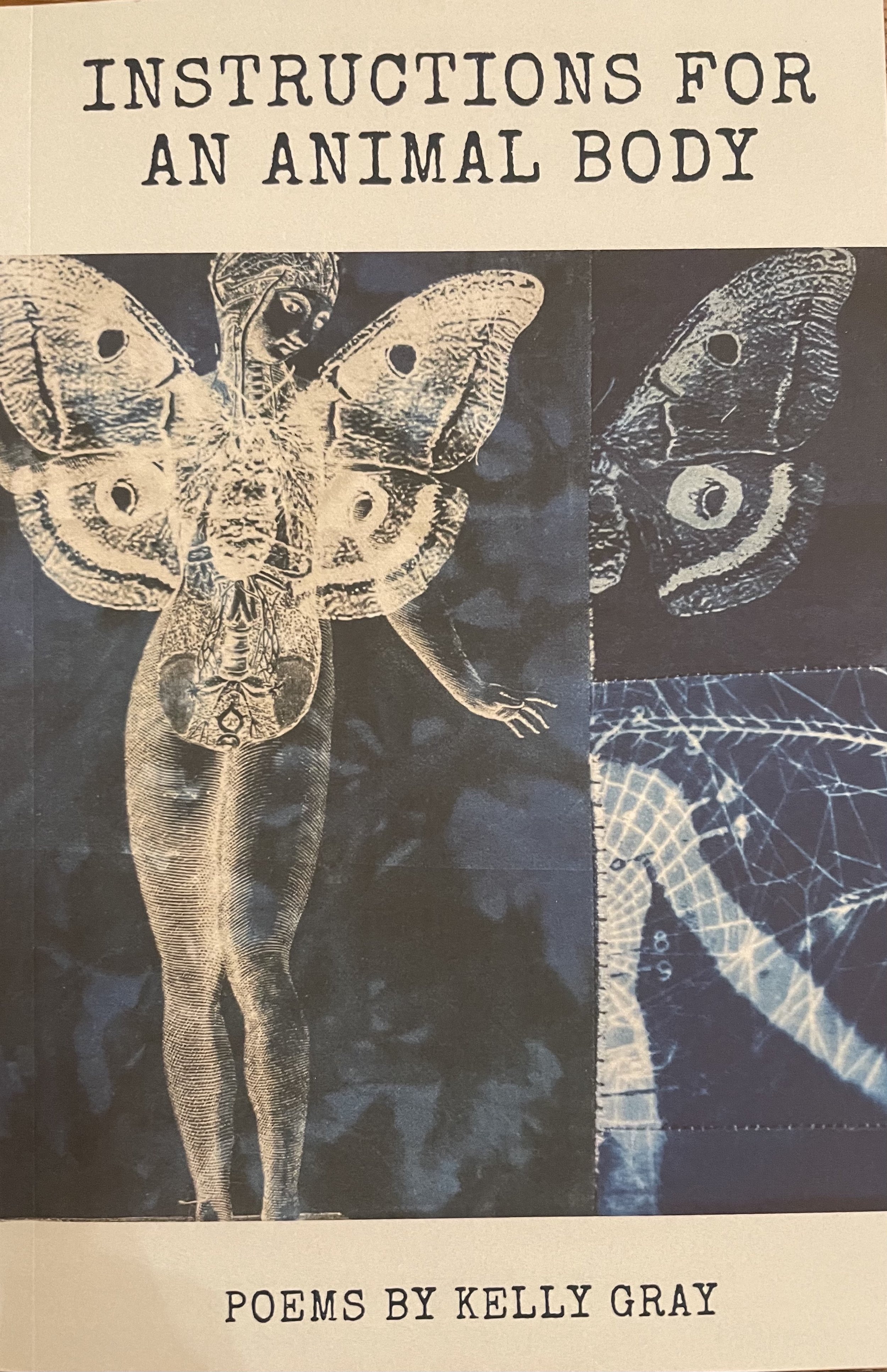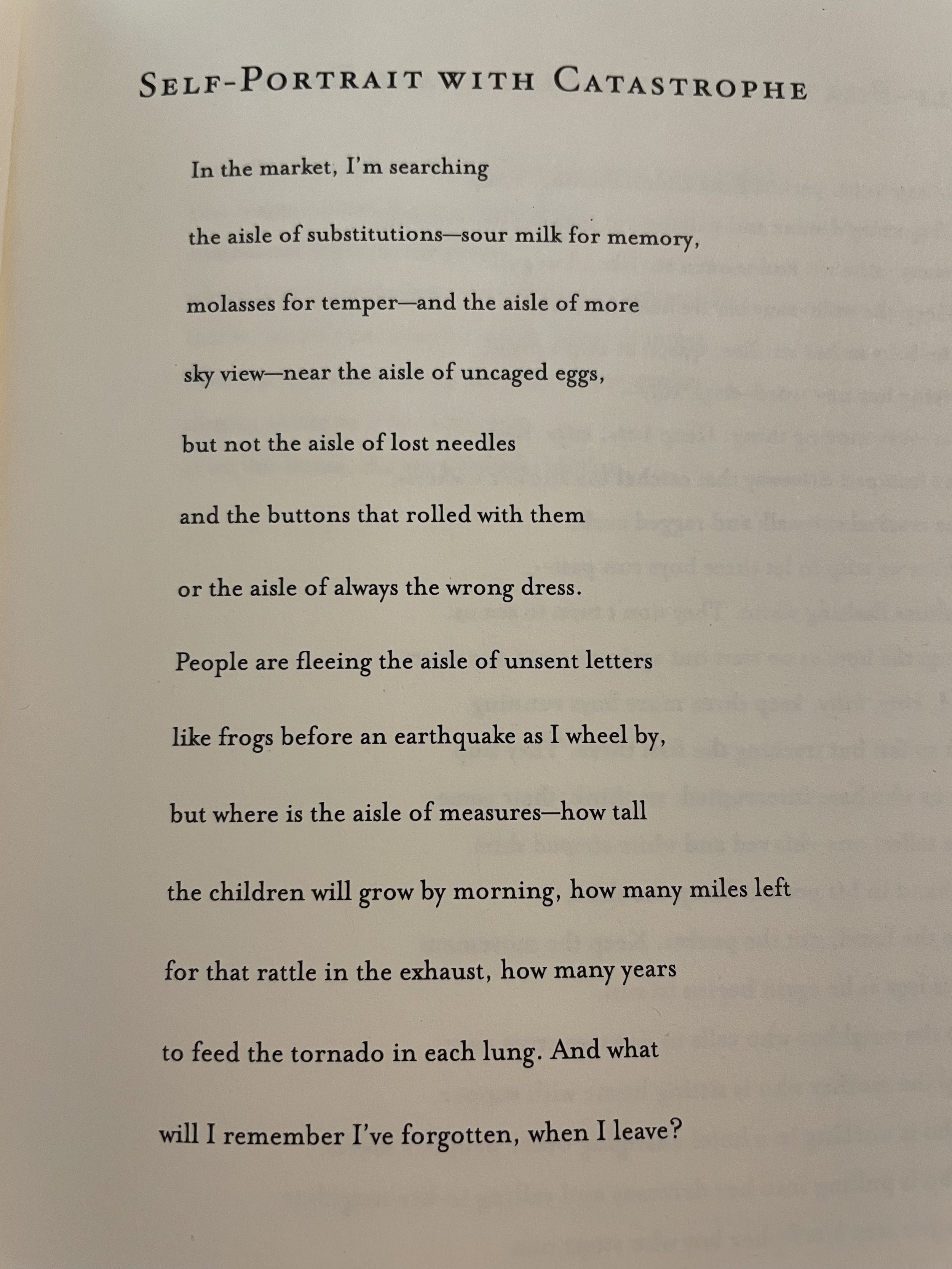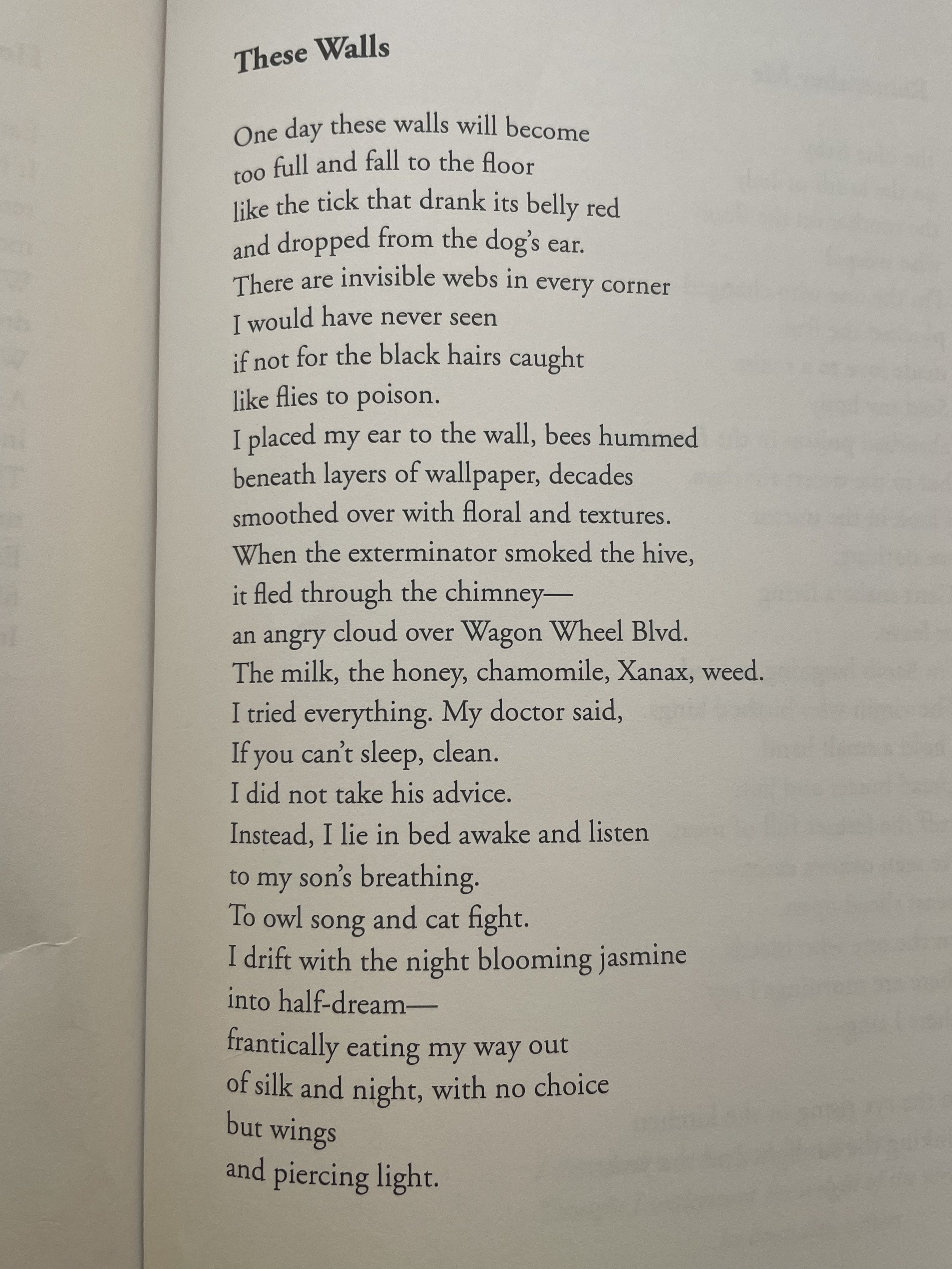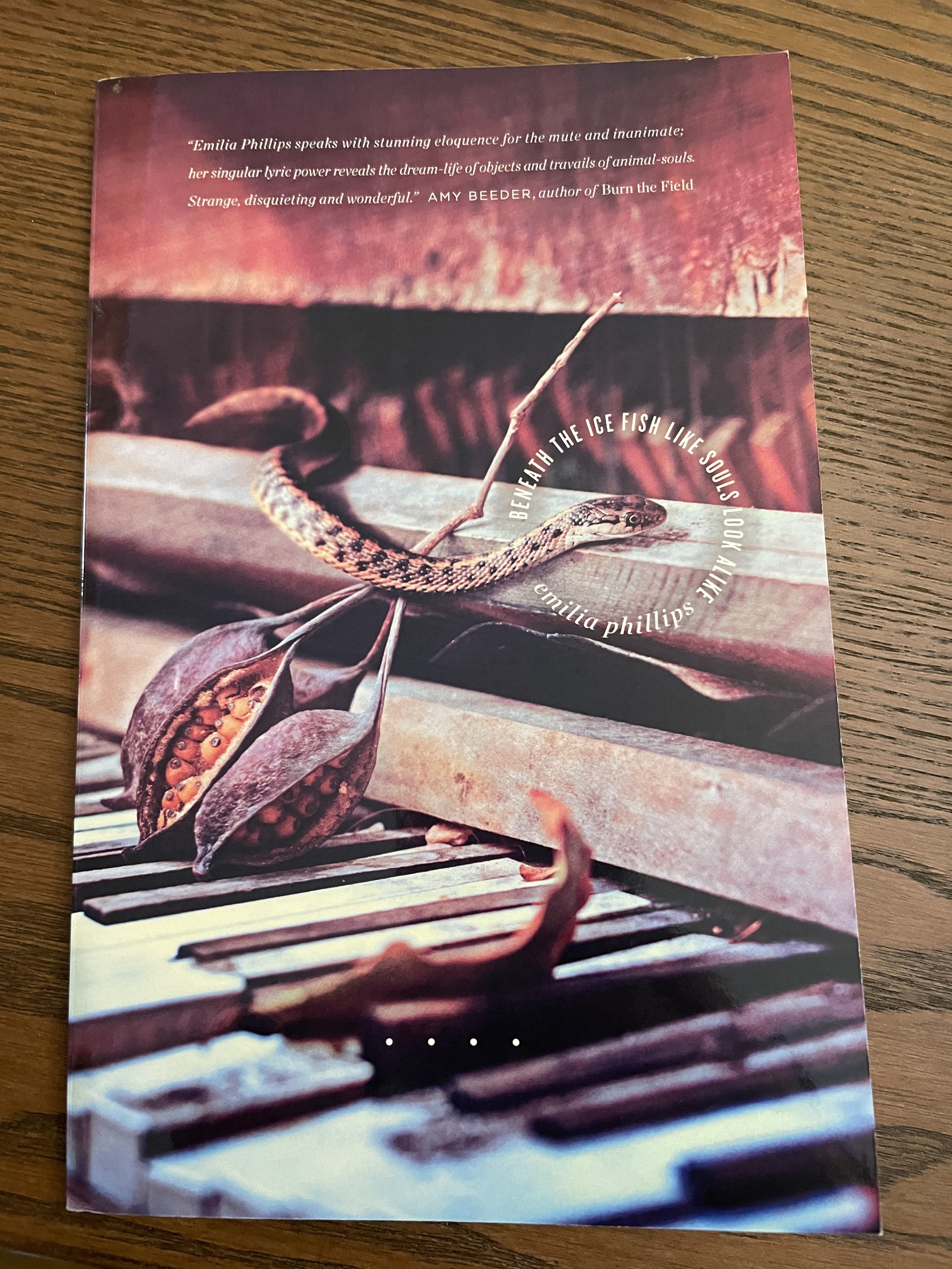I was fortunate to get to hear Shira Dentz read at the New Orleans Poetry Festival. I had seen her poems online but hearing her read and the discussion about her poems afterward was a treat. Despite the stacks of books I’ve yet to read, I bought her Sisyphusina, and it is opening up new directions for me. It is a book that I will need to read slowly and repeatedly access all of its layers.
For the first prompt, write a poem in four stanzas with each preceding stanza setting up the next—the loaded in the first becoming the loaded gun in the second.
The second prompt is to describe in a story or poem or essay what this “new season” of wind would be: where and when does it reside?
For the third prompt, write a story or poem using the following word list: “sand,” “loaded,” “vista,” “static,“ “wind,” “fall,” “crawls,” “iron,” “tool” “branches,” and “marrow.”
The last prompt is to write a poem that is in conversation with another poem as this one is with Emily Dickinson’s “My Life had stood - a Loaded Gun” (https://americanliterature.com/author/emily-dickinson/poem/my-life-had-stood-a-loaded-gun).
Bonus prompt: Write from the perspective of predator or prey and then switch midway.
Good luck writing! Have fun reading!


























